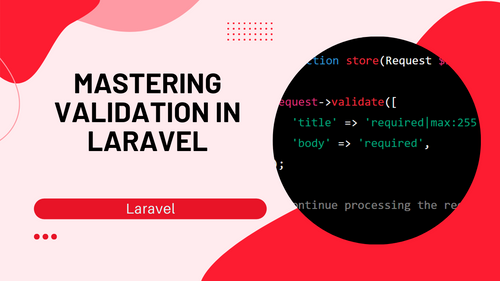Laravel, known for its elegant syntax and developer-friendly features, continues to be a preferred choice for web application development. In Laravel 10, email validation remains a critical aspect of ensuring data integrity and user authentication. As an expert in Laravel, I will guide you through the intricacies of email validation in this version, offering comprehensive insights, practical examples, and answers to common questions.
Laravel 10 Email Validation: An Overview
Email validation in Laravel 10 involves verifying the format and authenticity of email addresses provided by users. This process helps prevent invalid or fake email addresses from entering your application's database and enhances security by ensuring that communication with users occurs through valid channels.
Laravel provides a robust validation system, making it straightforward to implement email validation rules. Let's explore the essential steps and best practices.
1. Laravel Validation Rules for Email
In Laravel 10, email validation is streamlined with built-in validation rules. The email rule checks whether a given value is a valid email address format. Here's a simple example of how to use it in a validation request:
$request->validate([
'email' => 'required|email',
]);
In this example, we ensure that the email field is both required and in a valid email format.
2. Custom Validation Rules
While Laravel's built-in email rule is excellent for basic email validation, you can create custom validation rules to meet specific requirements. For instance, you might want to restrict registration to certain email domains or apply additional checks on email uniqueness. Laravel's custom validation rules allow you to tailor email validation to your application's needs.
3. Verifying Email Addresses
Email verification in Laravel 10 involves sending a confirmation link to the user's provided email address. Upon clicking the link, the user's email address is marked as verified in the database. Laravel's built-in verified middleware ensures that only verified users can access protected routes.
4. Email Verification Notifications
Laravel 10 simplifies the process of sending email verification notifications. You can generate email verification notifications using the Illuminate\Auth\Notifications\VerifyEmail notification class and easily send them to users.
use Illuminate\Auth\Notifications\VerifyEmail;
$user->notify(new VerifyEmail);
This notification contains a verification link, making it convenient for users to complete the email verification process.
5. Customizing Email Verification
Laravel 10 allows you to customize the email verification process to match your application's branding and user experience. You can customize the email message, subject, and the appearance of the verification link.
Common Questions About Laravel 10 Email Validation
1. Can I change the default email verification link expiration time?
Yes, you can modify the expiration time for email verification links in Laravel's config/auth.php configuration file by adjusting the expire option in the verification array.
2. How can I resend the email verification notification to a user?
You can provide users with an option to request a new verification link by implementing a "Resend Verification Email" feature. Laravel's resend method in the VerificationController facilitates this functionality.
3. Can I use a different email service provider for sending verification emails?
Absolutely. Laravel provides flexibility in configuring email service providers. You can easily switch to services like Mailgun, SendGrid, or others by modifying the config/mail.php configuration file.
4. What if a user's email address changes after verification?
Laravel 10 allows users to update their email addresses while keeping their accounts verified. However, the user will receive a notification at their new email address to confirm the change.
5. How can I protect routes that require email verification?
Laravel's verified middleware can be applied to routes that should only be accessible to verified users. Simply add this middleware to your route definition.
In Conclusion
Laravel 10 continues to provide developers with powerful tools for email validation and user authentication. By following best practices and leveraging Laravel's built-in features, you can ensure data integrity, enhance security, and create a seamless user experience. Whether you're a novice Laravel developer or an experienced one, mastering email validation in Laravel 10 is a valuable skill that contributes to the success of your web applications.



